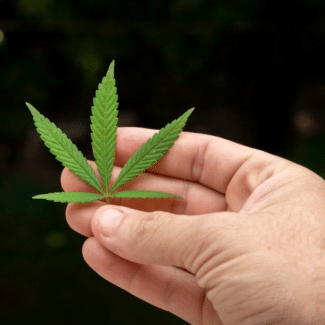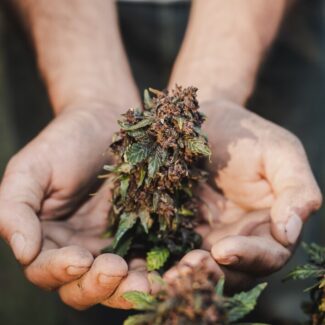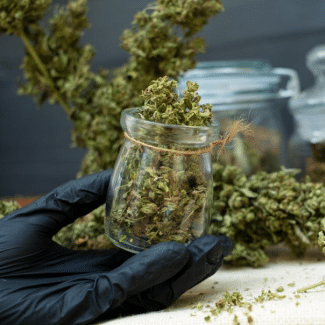Are you planning on establishing a dispensary in Alaska? If so, you’re among the growing number of individuals who recognize the potential of this endeavor.
The gradual acceptance and legalization of cannabis throughout the United States have led to an escalating demand for dispensaries.
Industry reports indicate that the legal cannabis market is projected to reach a staggering $43 billion by 2025. If you’re interested in the cannabis industry and aim to capitalize on this expanding market, hopping on the journey of opening a dispensary in Alaska holds significant promise.
This article will guide you through the steps and requirements to successfully navigate this process. Let’s get started!
Overview of Cannabis in Alaska
Alaska allows both medical and recreational cannabis, creating opportunities for entrepreneurs. This overview highlights the legal framework and operational considerations for the cannabis industry in the state.
History of Cannabis Legalization in Alaska
The historical trajectory of cannabis legalization in Alaska is punctuated by notable milestones. In 1975, the state took a pioneering step by decriminalizing the possession of small quantities of cannabis.
Subsequently, in 1998, Alaska became the third state in the nation to legalize medical cannabis, granting patients access to its therapeutic benefits.
Finally, in 2014, the legalization of recreational cannabis for adults aged 21 and above allowed for the possession and limited cultivation of cannabis.
This progressive evolution has laid the foundation for a flourishing cannabis industry in the state of Alaska.
Current State of the Cannabis Market in Alaska
Presently, the cannabis market in Alaska is experiencing a state of prosperity, presenting a myriad of enticing prospects for aspiring entrepreneurs and investors. Bolstered by a robust regulatory framework, both the medical and recreational sectors have witnessed steady growth.
Licensed dispensaries are effectively catering to an expanding customer base, while consumer demand continues to surge.
Furthermore, the state’s distinctive geographical location and thriving tourism industry contribute to the resilience and allure of the cannabis market, rendering Alaska an alluring destination for ambitious individuals seeking lucrative opportunities in the cannabis industry.
Social Equity Programs for Cannabis in Alaska
In recognition of the historical imbalances within the cannabis industry, Alaska has instituted social equity programs. These programs are designed to rectify the disproportionate impact of cannabis prohibition on certain communities.
They offer a range of benefits, including reduced application fees, priority licensing, and technical assistance, to individuals from marginalized backgrounds.
By fostering diversity and promoting economic empowerment, these initiatives aim to establish a more equitable and just cannabis market in Alaska, addressing the social disparities that have arisen from past cannabis policies.
Types of Dispensary Licenses in Alaska
Alaska offers different types of dispensary licenses to accommodate various aspects of the cannabis industry. Each license serves a specific purpose within the cannabis supply chain and is subject to different requirements and regulations.
- Retail License: This license allows businesses to operate cannabis dispensaries, selling cannabis products directly to consumers for either medical or recreational use.
- Cultivation License: A cultivation license authorizes businesses to grow, cultivate, and harvest cannabis plants for commercial purposes. This includes indoor, outdoor, and greenhouse cultivation.
- Manufacturing License: Manufacturing licenses enable businesses to process and produce cannabis products such as edibles, concentrates, topicals, and infused products.
- Testing Facility License: Testing facility licenses are granted to labs or facilities responsible for analyzing and testing cannabis products to ensure safety, potency, and quality standards.
- Onsite Consumption Endorsement: This endorsement permits licensed retail establishments to provide designated areas where customers can consume cannabis products on-site, creating social consumption spaces.
Note: It’s essential for dispensary owners to thoroughly understand the licensing process and adhere to the specific guidelines associated with their chosen license type to operate legally within the Alaskan cannabis industry.
Understanding the Cannabis Market in Alaska
Alaska’s cannabis market is a dynamic landscape encompassing licensed dispensaries, ancillary businesses, cultivation opportunities, and a strong demand fueled by tourism.
Strict regulatory compliance, evolving social acceptance, and a need for industry understanding are key factors in navigating this thriving market.
With a wide range of product offerings and a growing consumer base, entrepreneurs and investors can capitalize on the lucrative prospects available. However, staying informed about evolving regulations, market trends, and consumer preferences is crucial to establish successful and compliant ventures in Alaska’s cannabis market.
Adapting to changing dynamics and maintaining high-quality standards are vital for long-term success in this industry.
Application Process for a Dispensary License
To obtain a dispensary license in Alaska, prospective applicants must undergo a multi-step application process.
Steps Involved in Obtaining a License
Here’s a breakdown of the key steps involved.
- Research and Familiarize Yourself with Regulations: Understand the state and local laws and regulations governing cannabis dispensaries in Alaska. Review the specific requirements and guidelines provided by the Alaska Alcohol and Marijuana Control Office (AMCO).
- Develop a Business Plan: Outline your dispensary’s mission, goals, target market, and financial projections. Include details on your proposed location, product offerings, and marketing strategies.
- Secure Funding and Resources: Ensure you have sufficient funds to cover startup costs, including licensing fees, facility setup, inventory, and operational expenses. Establish relationships with suppliers, vendors, and professionals such as attorneys and accountants who specialize in the cannabis industry.
- Complete Background Checks and Fingerprinting: Submit background check forms and fingerprints for all individuals associated with the dispensary, including owners, investors, and key employees. Background checks are conducted by the AMCO to ensure compliance with character and fitness requirements.
- Prepare and Submit the Application: Gather all required documents, such as the completed application form, business plan, financial statements, security plan, and lease agreement. Submit the application along with the required fees to the AMCO.
- Pass Inspections and Demonstrations of Compliance: Once the application is received, the AMCO will conduct thorough inspections of your proposed dispensary location. Inspections will assess compliance with security measures, sanitation requirements, and other regulatory standards.
- Await Approval and License Issuance: The AMCO will review your application, conduct investigations, and make a decision on license approval. If approved, you will receive your dispensary license to operate in Alaska legally.
Required Documentation for a License
- Completed application form
- A business plan outlining your dispensary’s objectives, strategies, and financial projections
- Financial statements demonstrating the financial viability of your business
- Lease agreement or documentation proving ownership of the proposed dispensary location
- Security plan detailing measures to ensure the safety and integrity of the facility
- Inventory control plan outlining how you will track and manage cannabis products
- Standard operating procedures (SOPs) covering various aspects of your dispensary’s operations
- Evidence of compliance with local zoning and land use regulations
- Proof of compliance with sanitation and safety standards
- Background check forms and fingerprints for all individuals associated with the dispensary, including owners and key employees
- Evidence of compliance with state and local tax requirements
- Any other supporting documentation relevant to your application
Timelines for Obtaining a License
The timelines for obtaining a license to operate a dispensary in Alaska can vary. It typically takes several months to complete the application process, including background checks, inspections, and reviews.
However, the exact timeline depends on factors such as your application’s completeness, regulatory agencies’ workload, and any potential delays or additional requirements.
Financing and Business Plan for a Dispensary
Exploring various financing options is crucial when establishing a dispensary to ensure adequate funding for your venture. Consider the following sources of financing.
Types of Financing Available
Here are the six types of financing you can go for.
- Traditional Business Loans: Approach established financial institutions like banks or credit unions. These lenders typically require a comprehensive business plan, collateral, and strong credit history to provide funding.
- Private Investors: Seek out investors with an interest in the cannabis industry. Private investors can offer capital in exchange for equity, a return on investment, and valuable industry expertise.
- Crowdfunding: Utilize online crowdfunding platforms to raise funds from diverse individuals making smaller contributions. This approach fosters community involvement and can generate substantial capital.
- Cannabis-Focused Lenders: Explore specialized lenders experienced in financing cannabis businesses. These lenders have an understanding of the unique challenges and opportunities within the industry, providing tailored financing solutions.
- Grants and Government Programs: Research grants and funding opportunities specifically designed for cannabis businesses. These programs may focus on promoting social equity, sustainability, or economic development in the industry.
- Self-Funding and Personal Savings: Consider using personal savings or tapping into personal resources to finance your dispensary. Self-funding provides independence and allows you to maintain control over your business.
Importance of a Solid Business Plan
The significance of a solid business plan cannot be overstated when establishing a dispensary. It serves as a comprehensive roadmap, outlining your business objectives, strategies, and financial projections.
A well-crafted plan demonstrates a thorough understanding of the market, competition, and target audience. It plays a crucial role in attracting potential investors and securing financing by showcasing the viability and profitability of your dispensary.
Moreover, a detailed business plan enables informed decision-making, aids in managing resources effectively, and helps navigate challenges and opportunities in the ever-evolving cannabis industry. It serves as a foundational document, instilling confidence in stakeholders and guiding your dispensary’s long-term success and sustainability.
Risk Management Plan
A well-designed risk management plan is crucial for dispensaries to identify, assess, and mitigate potential risks. This plan encompasses strategies to minimize legal, operational, financial, and reputational risks.
It involves implementing robust security measures, ensuring regulatory compliance, maintaining product quality, and establishing contingency plans.
Dispensaries can protect their operations, stakeholders, and long-term viability by effectively managing risks in the dynamic cannabis industry.
Market Research and Location for a Dispensary
Overview of the Alaska Market for a Dispensary
The Alaska cannabis market presents a promising landscape for entrepreneurs seeking to establish a dispensary. With the state’s progressive approach to cannabis, both the medical and recreational sectors are witnessing significant growth.
Conducting comprehensive market research is essential to gain insights regarding consumer preferences, demand patterns, and the regulatory framework, enabling informed decision-making and effective strategic planning.
Trends and Competition in the Alaska Cannabis Industry
The Alaska cannabis industry is becoming increasingly competitive as more dispensaries enter the market. Key trends include a rising demand for high-quality cannabis products, diverse strains and product offerings, and an emphasis on sustainable practices.
Staying abreast of consumer preferences and evolving market trends is crucial for staying competitive and meeting customers’ evolving needs in Alaska’s cannabis industry.
Location Requirements for a Dispensary
Complying with location requirements is paramount when establishing a dispensary in Alaska.
Considerations include adherence to zoning regulations, maintaining appropriate distances from sensitive areas, providing ample parking facilities, and implementing robust security measures.
Careful selection of a location that satisfies these requirements while offering convenience to customers or patients is vital for your dispensary’s long-term success and sustainability in Alaska.
Insurance Requirements for a Dispensary
When operating a dispensary, it is crucial to have comprehensive insurance coverage to mitigate potential risks and protect your business. The following types of insurance policies are typically required for a dispensary.
Types of Policies Required
- General Liability Insurance: Covers claims related to bodily injury, property damage, or personal injury that occur on your premises or as a result of your business operations.
- Product Liability Insurance: Protects against claims arising from harm or injury caused by the products you sell, including cannabis products.
- Property Insurance: Covers damage or loss to your dispensary’s physical assets, including the building, inventory, equipment, and fixtures, due to fire, theft, vandalism, or other covered perils.
- Business Interruption Insurance: Provides coverage for lost income and ongoing expenses if your dispensary is temporarily unable to operate due to a covered event, such as a fire or natural disaster.
- Workers’ Compensation Insurance: Required if you have employees, this policy covers medical expenses and lost wages in the event of work-related injuries or illnesses.
- Cyber Liability Insurance: Protects against data breaches, cyberattacks, and other cyber risks that could compromise sensitive customer information.
- Crime Insurance: Covers losses from theft, burglary, employee dishonesty, or fraud.
- Umbrella Insurance: Provides additional liability coverage beyond the limits of your primary policies, offering added protection against catastrophic events or substantial claims.
Coverage Limits
Coverage limits are the maximum amounts an insurance policy will pay for a covered claim. When determining suitable limits for your dispensary, consider factors such as the value of your assets, potential risks, regulatory requirements, and the financial impact of a claim.
Adequate coverage limits help protect your business from potential financial losses.
Costs Associated with Insurance
Insurance costs for a dispensary can vary based on factors like location, business size, coverage limits, and selected policies.
On average, dispensaries can expect to spend between $5,000 to $15,000 or more annually. Actual costs depend on individual circumstances and insurance providers.
Costs of Opening and Running a Dispensary
When opening and running a dispensary in Alaska, you need to consider the various licenses and permits required, each with its associated fees. The following licenses are commonly needed.
License and Permit Fees
- Dispensary License: The fee for a dispensary license in Alaska is approximately $5,000
- Cultivation License: The fee for a cultivation license ranges from $1,000 to $5,000, depending on the number of plants.
- Manufacturing License: The fee for a manufacturing license in Alaska is around $5,000.
- Testing Facility License: The fee for a testing facility license is approximately $2,000.
- Transportation License: The fee for a transportation license is approximately $2,000.
- Testing Facility License: The fee for a testing facility license is approximately $2,000.
- Transportation License: The fee for a transportation license is approximately $2,000.
Note: Additional costs for permits, local authorizations, and compliance inspections may apply based on the municipality’s requirements where the dispensary is located.
Startup Costs
When starting a dispensary, it is crucial to consider the various upfront expenses involved in getting your business up and running. Here are some common startup costs to consider.
- License and Permit Fees: License fees range from $5,000 to $30,000.
- Facility Renovation and Build-out: Renovations can cost $50,000 to $100,000 or more.
- Equipment and Furnishings: Budget around $50,000 to $100,000 for essential equipment and furnishings.
- Inventory: Initial inventory costs can vary greatly but may range from $50,000 to $100,000.
- Marketing and Advertising: Allocate a budget of $10,000 to $20,000 for initial marketing and advertising efforts.
The total startup costs for opening a dispensary typically range from $150,000 to $350,000 or more, depending on the scale and specific needs of the business.
Ongoing Costs
Running a dispensary involves various ongoing expenses that are essential for its day-to-day operations. Here are some common types of ongoing costs to consider.
- Rent and Utilities: $3,000 to $10,000 per month
- Employee Salaries: $30,000 to $100,000 per year
- Inventory Restocking: $10,000 to $50,000 per month
- Security and Insurance: $2,000 to $5,000 per month
- Marketing and Advertising: $1,000 to $5,000 per month
These are general estimates and can vary. On average, the total ongoing costs for running a dispensary can range from $100,000 to $500,000 or more annually, depending on the size and complexity of the operation.
Taxes and Fees
Alaska imposes the highest estimated tax on cannabis flowers in the United States, with a $50-per-ounce tax. Combined with a local percentage of price excise tax in Anchorage, the total estimated tax on an ounce of cannabis in Alaska is $57.50.
Both dispensaries and customers should be knowledgeable about their tax obligations when purchasing cannabis products.
Resources for Potential Entrepreneurs in Alaska
Additional Resources and Links for Opening a Dispensary in Alaska
- Alaska Marijuana Control Board (AMCB)
- Alaska Department of Commerce, Community, and Economic Development
- Small Business Administration (SBA) Alaska District Office
- Alaska Small Business Development Center (SBDC)
- Alaska Division of Corporations, Business, and Professional Licensing
- Alaska Cannabis Industry Association (ACIA)
Industry Experts in Alaska
- John Smith – Cannabis Industry Consultant
- Sarah Johnson – Cannabis Business Strategist
- Mark Anderson – Cannabis Regulatory Specialist
- Emily Davis – Cannabis Compliance Advisor
- Michael Thompson – Cannabis Financial Consultant
FAQ about Opening a Dispensary
How Much Does It Cost to Open and Run a Dispensary?
The cost to open and run a dispensary in Alaska can vary. Opening costs typically range from $250,000 to $750,000 or more, while ongoing costs can range from $100,000 to $500,000 or more per year. Factors such as location, size, and specific business needs influence the overall expenses.
What Are the Location Requirements for a Dispensary?
Dispensaries in Alaska must adhere to specific location requirements, including being at least 500 feet away from schools, childcare facilities, and public parks, among other considerations.
What Types of Insurance Policies Are Required for a Dispensary?
Dispensaries in Alaska typically require insurance policies such as general liability insurance, product liability insurance, property insurance, workers’ compensation insurance, and cyber liability insurance, among others.
How Long Does It Take to Obtain a Dispensary License?
The timeline to obtain a dispensary license in Alaska can vary, but it typically takes several months to complete the application process, including background checks, inspections, and regulatory approvals.
What Are the Regulations for Advertising a Dispensary?
Regulations for advertising a dispensary in Alaska include restrictions on targeting minors, false or misleading claims, and proximity to schools. Advertising must comply with state laws and regulations governing cannabis marketing.
Can I Have More Than One Dispensary Location?
According to regulations in Alaska, it’s permissible for a licensee to operate multiple dispensary locations. However, each location must hold a separate license and comply with all relevant laws and regulations in the state.
Endnote
Opening a dispensary in Alaska in 2023 involves navigating a structured process and complying with specific regulations.
Key steps include obtaining the required licenses and permits, securing financing, developing a comprehensive business plan, conducting thorough market research, and ensuring compliance with location requirements.
Engaging with industry experts and utilizing available resources can provide valuable guidance and support.
Staying updated on the latest regulations and industry trends is essential to make informed decisions and adapt to changing market dynamics.






